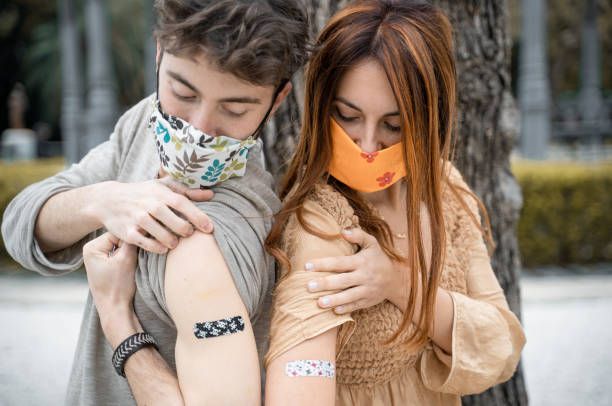How to Deal With Summer Insect Bites and Stings
As the sun's warmth calls us outdoors, we’re not the only ones it’s calling! The warmer the weather gets, the more bugs will come crawling out. From the hum of bees to the buzz of mosquitoes, these seasons are prime time for insect activity, leading to an uptick in bites and stings.
While most are merely nuisances, some can pose significant health risks. Below, we'll teach you the most effective strategies for preventing, identifying, and treating insect bites and stings, ensuring your time spent outdoors is enjoyable and safe. As always, if you or a loved one experiences adverse health effects associated with bug bites or stings, seek urgent medical care.
Preventing Bug Bites and Stings
Preventing bug bites and stings is key to fully embracing the warmer months without the discomfort and potential health risks associated with insect encounters. Here are effective strategies to subside the pests and keep you out of your local urgent care clinic:
Personal Protection:
1. Insect Repellant - Apply EPA-approved repellents containing chemicals like picardin or DEET. Alternatively, natural oils like lemon eucalyptus on exposed skin can repel insects. Follow the product instructions carefully to ensure effectiveness and safety.
2. Appropriate Clothing - Wear long sleeves, pants, and closed-toe shoes when venturing into insect-prone areas. Light-colored clothing can also help you see ticks and other insects more easily.
3. Avoid Attractants - Scented lotions, perfumes, and even some sunscreens can attract insects. Opt for unscented products when heading outdoors.
Environmental Controls:
1. Standing Water - Eliminate sources of standing water and puddles around your home, such as in plant saucers, bird baths, and clogged gutters, to reduce mosquito breeding grounds.
2. Window and Door Screens - Ensure screens are intact to keep flying insects outside. This way, you don’t have to also stress about bugs being inside your home.
3. Proper Waste Disposal - Seal garbage and compost bins tightly! The smell of your food waste can attract insects.
By combining personal protective measures with environmental controls, you can reduce your risk of bug bites and stings, allowing you to fully enjoy the beauty and activities that the warmer seasons have to offer.
Identifying Common Insect Bites
If you do happen to get a bite or sting from an insect, your next step can be identifying what type of insect the wound came from. This can help you and providers of urgent care services identify how to best treat the bite or sting. Some of the most common types of insect bites and stings include:
Mosquito Bites
One of the most common bites to identify is the mosquito bite. It is characterized by a puffy, reddish bump appearing a few minutes after the bite, which can also lead to a hard, itchy, reddish-brown bump or multiple bumps. These bites are generally harmless but can transmit diseases in certain endemic areas.
Bee and Wasp Stings
Bee stings cause a sharp pain and a red welt at the sting site, with slight swelling around it. Wasps, which can sting multiple times, may cause a similar reaction. Removing the stinger quickly can reduce the amount of venom injected.
Tick Bites
Tick bites can be particularly harmful if the tick is harboring an illness, and therefore its identification is crucial. These bites often go unnoticed unless you spot the tick on your skin or start seeing harmful symptoms. They can lead to a red spot or rash that looks similar to a bullseye. It’s vital to monitor tick bites due to the risk of Lyme disease or other tick-related diseases.
Ant Bites
Fire ant stings produce a sharp pain and a red hive at the sting site, followed by a blister. The sting site may become itchy and swollen. They often heal on their own, but their pain can pose a nuisance, especially for children. Consider seeking care from a pediatric urgent care center.
Each insect bite or sting has distinct features. Recognizing these can help in applying the correct first-aid measures and deciding when professional medical intervention is necessary.
First-Aid Treatment of Insect Wounds
Effective first-aid treatment of insect bites and stings can alleviate discomfort and prevent complications. Here’s how to address common reactions:
Immediate Steps:
1. Stinger Removal: For bee stings, gently scrape the area with a blunt edge, like a credit card, to remove the stinger. Avoid using tweezers, which can squeeze more venom into the skin.
2. Clean the Area: Wash the affected site with soap and warm water to reduce your infection risk.
3. Reduce Swelling and Pain: Apply an ice pack wrapped in a cloth to the bite or sting for 10-15 minutes at a time to decrease swelling and soothe pain.
4. Topical Treatments: Over-the-counter hydrocortisone cream or calamine lotion can relieve itching. An oral antihistamine can help with swelling and rash.
Home Remedies:
1. Aloe Vera: The gel from an aloe vera plant can cool the skin and reduce itchiness.
2. Baking Soda Paste: Try mixing baking soda with water to create a thick paste. This can then be applied to the bite to alleviate itching.
Prompt and proper first-aid care for insect bites and stings can significantly lessen discomfort and aid in faster healing, reducing the likelihood of severe allergic reactions or infections.
When to Seek Medical Attention
Seeking medical attention for insect bites or stings is crucial under certain circumstances. If you experience symptoms of an allergic reaction, such as difficulty breathing, swelling of the face or throat, rapid heartbeat, or dizziness, seek emergency care immediately. Additionally, signs of infection at the bite site, including increasing redness, warmth, swelling, or pus, warrant a visit to a healthcare provider.
Tick bites also require special attention if the tick was attached to you for over 24 hours or if you develop a rash, fever, or flu-like symptoms, as these could indicate Lyme disease or other tick-borne illnesses. Prioritizing your health and safety is imperative when dealing with insect bites and stings.
Receive Bug Bite Treatment Today
Navigating the challenges of insect bites and stings during spring and summer requires knowledge and preparation. By understanding how to prevent, identify, and treat common insect-related injuries, you can enjoy the warmer months with peace of mind. However, should you encounter severe reactions or signs of infection, UrgiClinic Urgent Care is here to provide prompt, professional medical assistance.
Don't let insect bites dampen your outdoor adventures. If you need medical advice or treatment, visit UrgiClinic Urgent Care. Let us help you ensure your health and safety so you can make the most of every warm day.













